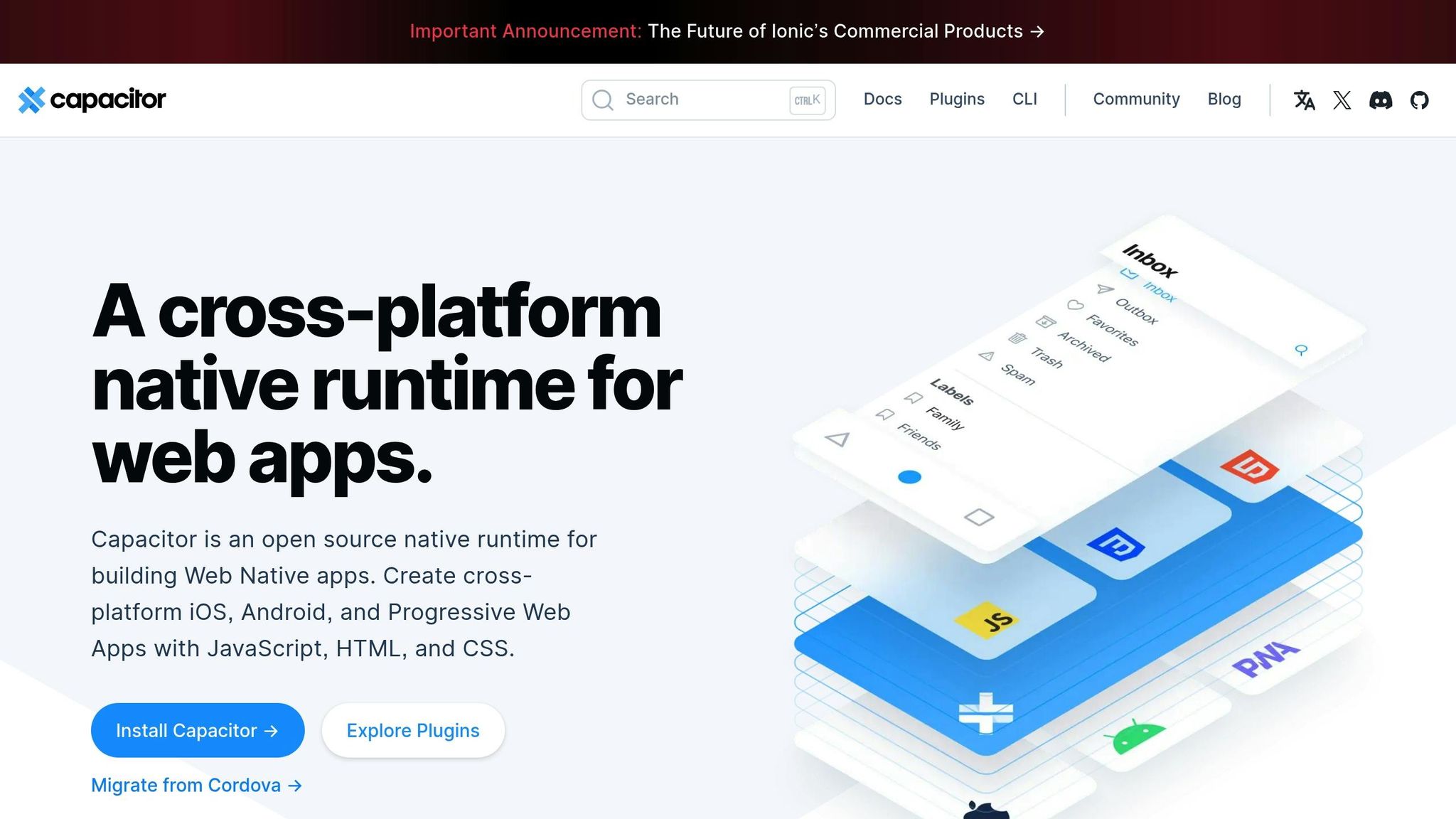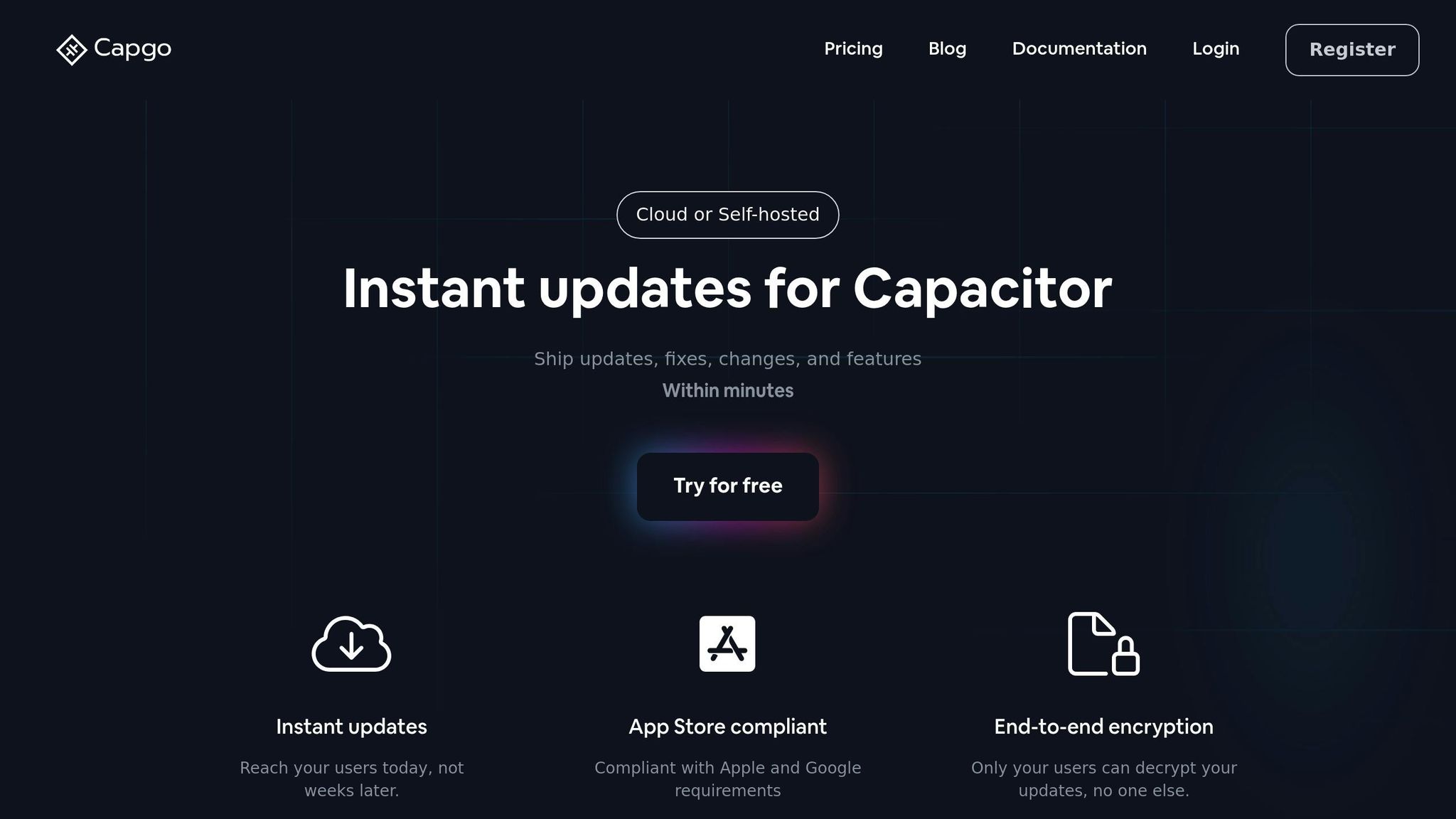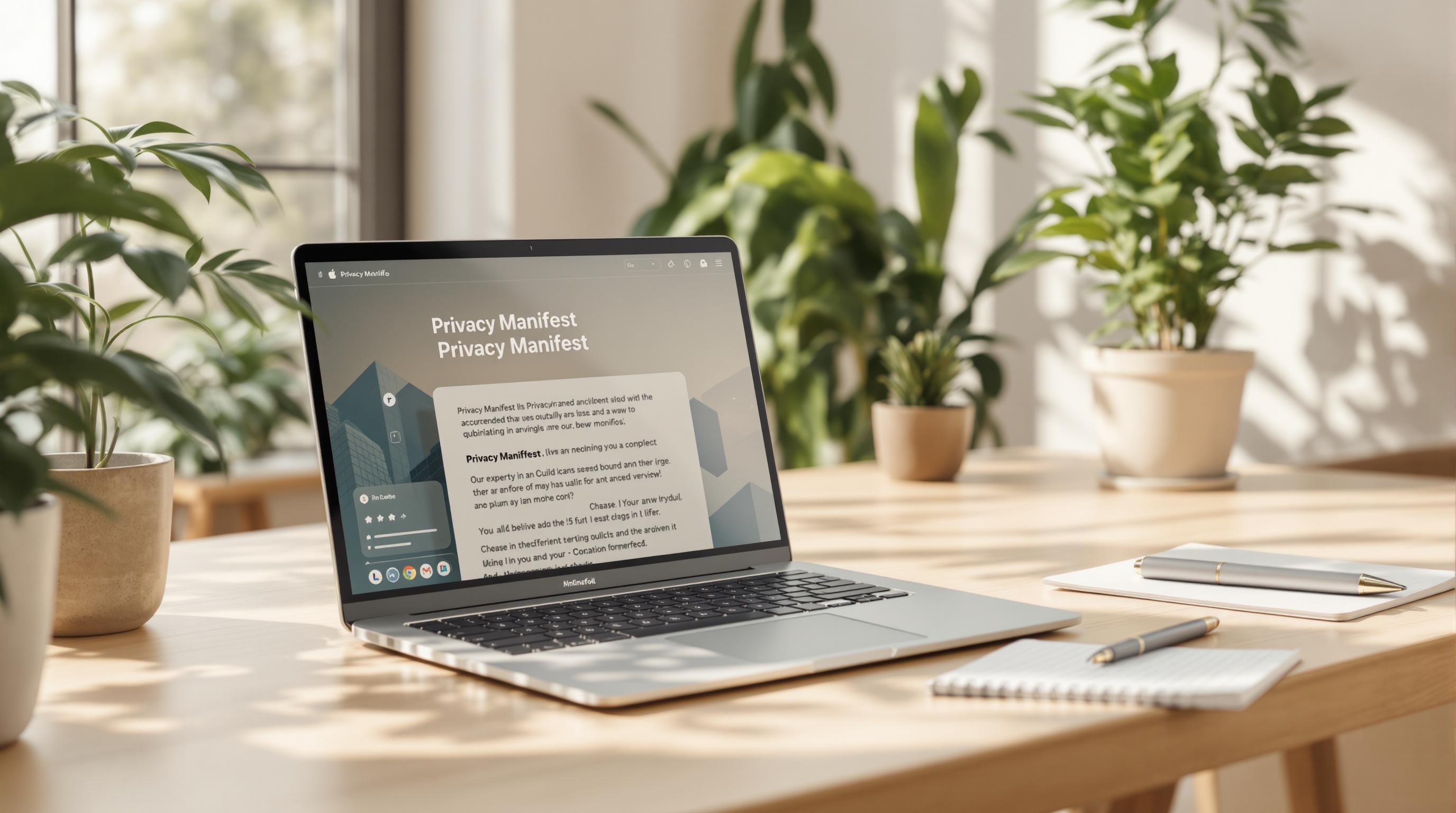Apple’s Privacy Manifest is now mandatory for all iOS apps. Starting May 2024, every App Store submission must include this JSON file to detail data collection, API usage, third-party SDKs, and network domains. Here’s what you need to know:
- What it is: A JSON configuration file that discloses:
- Data collected and its purpose
- APIs and third-party SDKs used
- External domains accessed
- Why it matters: Ensures transparency and compliance with Apple’s privacy standards.
- How to comply: Add the manifest to your iOS app bundle and update it regularly, especially if using live-update tools like Capgo.
Quick Tip: Tools like Capgo simplify compliance by automating manifest updates, offering instant deployments, and providing analytics for tracking success.
Keep reading to learn how to set up and verify your Privacy Manifest, avoid common pitfalls, and ensure smooth updates.
WWDC23: Get started with privacy manifests | Apple
Privacy Manifest Core Elements
Apple’s Privacy Manifest includes three main components:
-
Data Declaration: Specify the types of data your app collects, why it’s collected, any privacy-sensitive APIs it uses, and any third-party SDKs integrated into the app. You must also provide a clear business reason for each.
-
External Domains: List all external domains your app communicates with, explain the purpose of the communication, and detail the security measures in place.
-
JSON Format and Embedding: Follow Apple’s required JSON structure for the manifest and ensure it’s embedded in both your app bundle and any live-update packages.
Next, we’ll walk through creating and verifying your manifest in a Capacitor project.
Setting Up Privacy Manifest in Capacitor

Creating the Manifest File
Start by adding a file named ios/App/Resources/PrivacyInfo.xcprivacy to declare your app’s API usage and data collection. Here’s an example of what the file might look like:
{ "NSPrivacyAccessedAPITypes":[{"NSPrivacyAccessedAPIType":"NSUserDefaults","NSPrivacyAccessedAPITypeReasons":["FE001"]}], "NSPrivacyCollectedDataTypes":[{"NSPrivacyDataType":"NSPrivacyDataTypeDeviceID","NSPrivacyDataReason":"Basic app functionality"}]}After creating this file, open Xcode to ensure it’s correctly included in your project.
Testing and Verification
In Xcode, navigate to Product > Analyze to generate a Privacy Report. Carefully review the report for any warnings or undeclared APIs, and make necessary adjustments to avoid issues. Once everything checks out, proceed to deploy your updates.
Updates with Capgo

After passing Xcode analysis, use Capgo for live updates to keep your app’s privacy manifest up-to-date. Capgo provides:
- Instant deployments: 95% of users receive updates within 24 hours [1].
- One-click rollback for quick fixes.
- Analytics tools to track update success and ensure compliance.
Capgo’s Team plan is priced at $83 per month (billed annually), supporting up to 100,000 monthly active users (MAU) and 2,000 GB of bandwidth.
Privacy Compliance Guidelines
After verifying your manifest in Xcode, it’s important to ensure privacy compliance remains intact. Here’s how to keep things on track.
Recommended Practices
Consider using Capgo to push manifest updates instantly, avoiding delays caused by App Store reviews. This tool also supports staged rollouts, letting you test changes with real-time analytics before rolling them out to all users [1].
Common Pitfalls
Relying on manual updates can be slow, as they depend on App Store review times, which can take days or even weeks. This often leaves documentation outdated. On the other hand, automated tools allow for instant updates, provide analytics to monitor deployments, and make it easy to roll back changes if something goes wrong [1].
Manual vs. Automated Updates
Here’s a quick comparison of manual and automated update methods:
- Delivery Speed: Manual updates can take days or weeks, while automated updates reach 95% of users within 24 hours [1].
- Tracking Success: Manual methods vary, but automated updates achieve an 82% success rate worldwide [1].
- Rollback Options: Manual updates offer limited recovery, while automated updates allow immediate rollbacks.
- Monitoring: Manual checks are time-consuming, whereas automated tools provide real-time analytics [1].
- Distribution: Manual systems are basic, while automated tools support advanced distribution channels [1].
- Security: Manual updates lack built-in encryption, whereas automated systems use end-to-end encryption [1].
Live Update Tools Comparison
Let’s dive into a comparison of two popular live-update platforms and see how they stack up.
Platform Features and Pricing
| Feature | Capgo | Appflow |
|---|---|---|
| End-to-end encryption | Yes | - |
| Update success rate | 82% worldwide [1] | - |
| Update delivery time | 95% within 24h [1] | - |
| Bundle download speed | 114 ms (5 MB) [1] | - |
| Annual cost (Team plan) | $996 | $6,000 [1] |
Quick takeaway: Capgo offers a much lower first-year cost - $996 compared to Appflow’s $6,000.
Now, let’s look at how Capgo stands out specifically for Privacy Manifest updates.
Privacy Manifest: Capgo Benefits
Capgo’s open-source codebase makes it a strong choice for managing Privacy Manifest updates. It enables quick adjustments to meet evolving privacy standards, ensuring compliance stays manageable [1].
Summary
Since May 2024, all iOS apps must comply with mandatory manifest requirements. Automation can make managing these manifests much easier. For Capacitor projects, include your manifest in the iOS bundle and use tools like Capgo to automate updates securely, thanks to its end-to-end encryption.
With your manifest set up and updates automated, here are some key practices to ensure smooth Privacy Manifest updates:
- Use CLI tools to simplify deployment.
- Implement channel systems for controlled update rollouts.
- Keep detailed documentation of your data collection processes.
- Test and verify privacy compliance on a regular basis.




